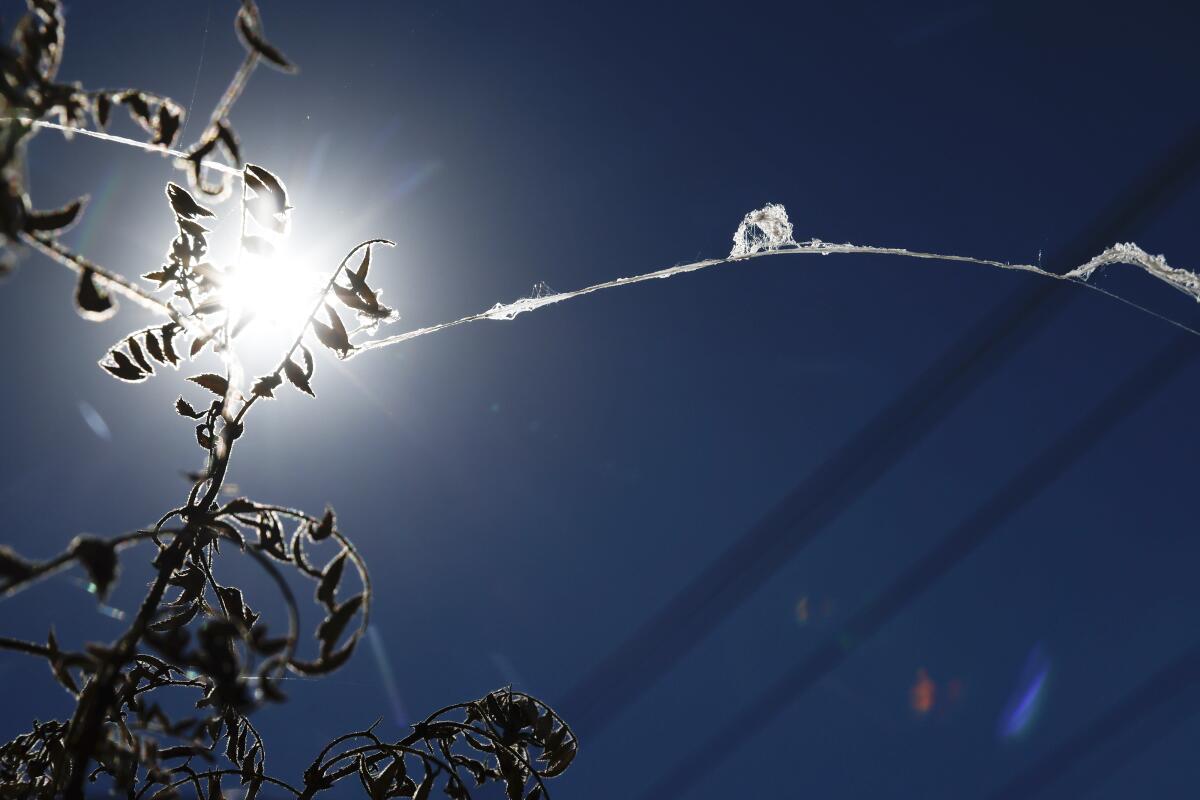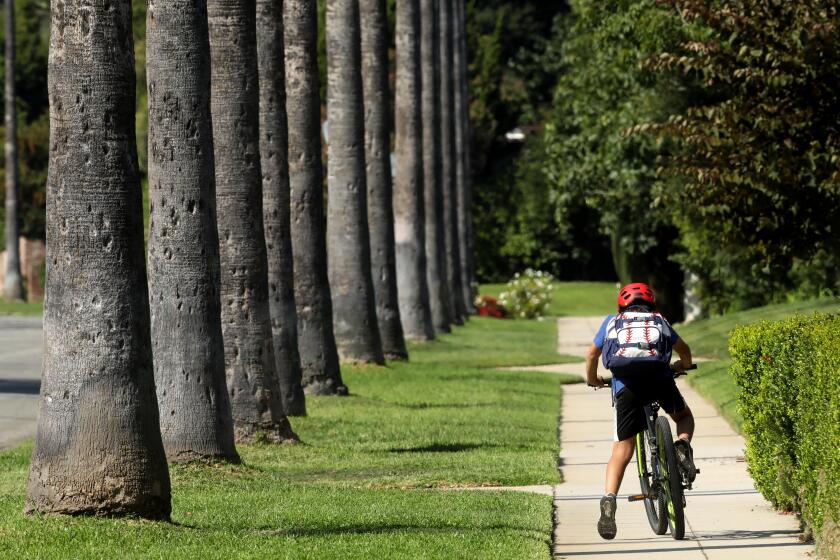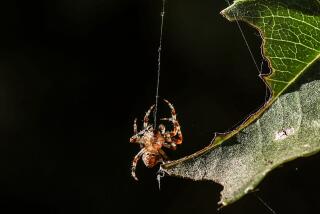What are those web-like clumps falling from the sky around the Bay Area?

- Share via
In time for the Halloween festivities, residents in the Bay Area and Central California reported seeing clumps of web-like substances hanging from trees or drifting in the wind last week.
The most likely sources of the spooky-looking webbing are baby spiders who use updraft winds to disperse themselves after hatching, according to scientists. These webs have been most prominent in Salinas, Monterey, Santa Cruz, Oakland and Berkeley.
Experts theorize that the web-like substance comes from a process called ballooning, in which baby spiders, about 1 to 2 millimeters long, use their silk to drift in the warm wind.
This phenomenon isn’t something Los Angeles County’s urban residents are likely to see, said Rick Vetter, retired research associate from the Department of Entomology at UC Riverside.
He said this process typically occurs in rural areas “because of the available vegetation.”
In areas where ballooning is visible, people shouldn’t panic about spiders falling on them or getting bit.
“Their biting parts are too weak to penetrate human skin and their venom is designed to kill teensy insects,” he said.
You’re not imagining it. Fortunately, there are some DIY ways to keep the critters out of your house and off your skin.
The only potential area Los Angeles County residents could see these web-like clumps, Vetter said, is on trees in parks.
When ballooning, the light weight of the baby spider allows it to take flight by catching a breeze. According to the Missouri Department of Conservation, the spider faces into the wind and stands on the tips of its legs with its abdomen raised high in the air. The spider then releases silk from the end of its abdomen and the silk increases in length as the spider waits for the strand to catch enough wind to carry it.
When large numbers of spiders balloon at the same time, their strands may become entangled and form a large mass, according to the conservation.
In 2022, Mohammad K. Jawed, an associate professor of mechanical and aerospace engineering at UCLA, was a co-author of a report that found spiders can float and drift like a balloon with lift provided by electrostatic forces, air currents or both. The study was conducted using simulations created by a computer algorithm.
This process is common during autumn when temperatures are still warm and updraft winds are prevalent, sometimes known as goose summer, Vetter said.
Palm trees — which are actually botanically closer to grass — are difficult to prune and dangerous in hot, windy weather. Replace them with true shade trees.
While scientists in the central and northern parts of the state theorized the web-like silk was coming from baby spiders, California Academy of Sciences entomologists “are not yet convinced,” said Megan Ely, spokesperson for the academy.
Last week, academy scientists collected the floating silk and began to sequence the material in their genomics lab, she said.
“They have few theories on what it could be, but we won’t know until we get the results from the lab analysis,” she said.
More to Read
Sign up for Essential California
The most important California stories and recommendations in your inbox every morning.
You may occasionally receive promotional content from the Los Angeles Times.













